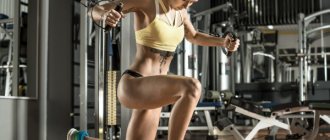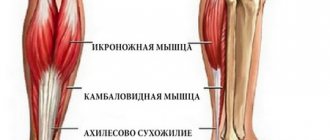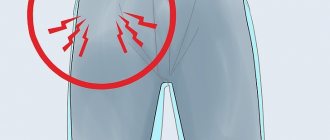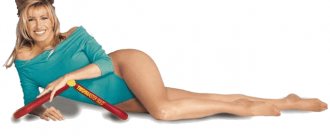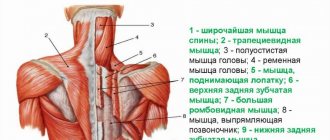How many times a week should you pump your legs? Unfortunately, not all gym goers are interested in this issue. As a rule, they are guided by the following logic: “You can’t see your legs under your pants, which means there’s no need to pump them up!” The saddest thing in this situation is that not only beginners, but also many regulars of fitness centers think this way. If you are reading these lines now, then most likely you are not one of these people, and you understand the importance of training the lower body. Well, in this case, we suggest you read our article, in which we discussed in detail how many times a week you need to pump your legs. In addition, here you will find a lot of interesting information about creating a competent training system and combining leg training with other muscle groups!
Large and small muscle groups
To give a complete and detailed answer to the question: “How many times a week should I train my legs?”, you must first understand what type of muscle group this muscle group belongs to. There are large and small muscle groups in our body. The first include the chest, back and, of course, legs (they make up approximately 50% of the total muscle mass of the human body). The second ones include biceps, triceps, deltoids and calves. It's very simple: large muscle groups require a lot of time to recover, and small muscle groups, in turn, recover several times faster. If you are a girl and want to pump up beautiful thighs, how to do this is described in this article: https://fb.ru/article/368193/kak-nakachat-bedra-devushke-byistro.
Pumping additional muscles
In fact, there are relatively few exercises that can engage such a large number of muscles. The squat works the quadriceps (quadriceps), calves, hamstrings, glutes, back muscles, and abs.
In fact, properly performed squats work almost every muscle in your core. And the core muscles are the basis for building your body.
It turns out that without squats, of course, you can build a beautiful body. But this will take many times more time and effort. Therefore, it is still better to devote one day a week to pumping up your legs.
Features of leg training
As a rule, most gym goers work out on a three-day split: chest and biceps on Monday, back and triceps on Wednesday, shoulders and legs on Friday. This scheme is familiar to many regulars of fitness centers, but it does not work for everyone. Some athletes progress without problems from training their shoulders and legs in one day, while others, on the contrary, do not see any results from such a system, without improving either here or there. In such a situation, it makes sense to set aside a separate training day for your legs, which you could devote to working them out.
What happens if you train your lower body very often?
How often to pump your legs? We've already dealt with this. Now we would like to explain why you should NOT pump your legs too often. Many novice athletes mistakenly believe that if they regularly work out a certain muscle group, it will grow faster. In fact, this is far from the case. As we wrote earlier, any muscle group needs time to recover. If you train your body too often, it will not only not add muscle to you, but, on the contrary, it will ruin existing results and bring the athlete to a state where he cannot work with his usual working weights. In bodybuilding, this phenomenon is called overtraining.
The truth that professional bodybuilders won't tell you
Someone, having read the section above, may object: “But Arnold Schwarzenegger and other professional bodybuilders trained almost every day! And they didn’t have any overtraining, they had wonderful results!” There is indeed some truth in these words, but one important thing is not taken into account here: absolutely all famous bodybuilders use steroids in their training. Anabolic drugs not only build muscle mass, but also significantly speed up recovery after heavy training sessions. For ordinary people who exercise without the use of pharmacological products, such training is absolutely not suitable.
Additionally, it is important to understand that even professionals like Arnold Schwarzenegger only trained in this style in the weeks leading up to competition when they needed to reach their peak condition.
Increase testosterone
One of the main and most important reasons to do leg exercises is to naturally increase testosterone. As is known, testosterone in men affects sexual activity. But, in addition to this, it also affects well-being, both moral and physical. In addition, testosterone is the main hormone for building muscle mass. Therefore, increasing its natural level is certainly very beneficial for us.
Various studies have shown that performing intense exercises aimed at strengthening and enlarging the muscles of the legs helps to significantly increase the production of natural testosterone.
Tips and tricks
From the question: “How many times a week should I pump my legs?” let's move smoothly to the question: “How to pump up your legs?” We'd like to give you some helpful tips to help you make your lower body workouts not only safe, but also effective!
1. Always warm up. Knee joints are a very vulnerable place that can be easily damaged during leg training. To prevent this from happening, before you start lifting weights, you need to do a high-quality and complete warm-up. This way you will warm up your joints and tendons and prepare them for subsequent loads. To start, work on a treadmill, exercise bike or elliptical for 5-10 minutes. After this, the next 10 minutes should be spent stretching. Remember that you need to stretch not only your quadriceps, but also all the muscles in your legs and lower back. Before your first working approach to an exercise, do 2-3 warm-up sets with light weights. It is important to understand that you need to warm up not only on leg day, but also before training any other muscle group.
2. Get enough sleep. Every person interested in how many times a week to pump their legs should know that sleep plays an important role in the body's recovery processes. To ensure your muscles have time to recover for the next training session, you must get the required amount of sleep.
3. Eat right. Your leg muscles (like any other muscle in your body) won't grow if you don't eat right. To burn fat or gain weight, you first have to change your diet. You can know the technique of performing each exercise by heart and follow all the rules of iron sports, but if your diet consists of fast food products, buns and sandwiches, then you can forget about a beautiful and aesthetic physique.
4. Perform each exercise correctly. Not only your final result, but also the integrity of your joints and tendons depends on how technically you perform each exercise. If you doubt whether you are performing the exercise correctly or not, then ask the trainer to follow you and help if something happens.
Shake your legs!
Many bodybuilders find it much more difficult to pump up their legs than any other part of the body. However, this is not surprising. After all, most of you probably start your workout with bench presses or biceps curls.
Of course, it’s the chest and biceps that catch your eye first! But the leg muscles are not so “ostentatious”, and it is very difficult to train them. So it turns out that their turn comes when you are already pretty tired. Personally, pumping up my legs wasn’t easy for me either.
And not only because I didn’t do them in the first year. The thing is that my legs are long, and the muscles on them are also long. For Lee Priest, for example, it’s easier to “give” himself powerful legs because, you know, he has them shorter.
It is important!
For us long-legged people, in order to gain the same “mass,” we need to struggle long and hard under the barbell. But in the end, the win is always ours!
To tell the truth, in the first year of training I didn’t pay attention to my legs at all. “I collected tops,” that is, I “pumped” only my arms and chest. But I soon realized: you can’t do without working your legs, if, of course, you want to compete – and win. And I wanted this like no one else! Many people are afraid or lazy to work on their legs. And they constantly come up with “oh, “My knees hurt” or “I have bad genetics.”
Imagine, I once tried to convince myself of this! I didn't like training my legs at all. It took years before I realized that working out any part of the body can be fun if you really want to achieve results. And when you achieve it, you get even more pleasure! Want some tips for training your quads? Then learn while I live.
Take it as an axiom: the legs must be worked super hard, with deadly intensity. On the other hand, keep in mind: you can’t go “to failure” in every workout.
Train your legs on the first day of your split, immediately after your rest day.
You are mentally ready for hard work, your muscles are well stocked with glycogen - so why not take on the most difficult, and, most likely, the most “lagging” part of the body?
Here is an example of a successful combination of two training principles: priority and split system. Find the pattern that works best for you. Experiment with exercises, their order, sets, repetitions.
Please note: the quadriceps need a “shock” in almost every workout. Variety is the most important “component” of leg training. Don't literally follow someone else's program until you're sure it's right for you.
Interesting: How to build muscle mass
At one time, Franco Colombo “pumped up” a huge mass with a lot of repetitions. But I had a completely different approach. You may have read somewhere that bodybuilder so-and-so doesn’t do squats at all.
Show me this bodybuilder! I sincerely doubt that without squats, anyone “pumped up” at least some quadriceps.
Heavy squats to parallel are a vital necessity! Otherwise, it is simply impossible to “make” the mass, shape and relief of your legs!
Helpful advice!
Moreover, squats load not only the legs, but also the buttocks and lower back. Since squats have always been difficult for me, I chose “superior partners” for myself. People like Ken Waller, for example. He was fantastically strong in this exercise, and I always tried to “catch up” with him.
It is important to train with someone who is stronger than you: the spirit of competition is the greatest engine of progress. Squats with a barbell on your shoulders provide a powerful load on the buttocks. Some bodybuilders should not “grow” this part of the body. Personally, I often did front squats as a substitute.
In this version, it is more difficult to maintain balance, but the main work is done by the quadriceps - with minimal participation of the buttocks and lower back.
Some of the modern pros train their legs once a week. I'm not sure if this pattern is suitable for beginners or advanced bodybuilders. During my golden years, I worked my quads three times a week, but alternated between hard, moderate, and easy workouts.
Constant heavy training overloads the joints, but if you work easy all the time, you won’t build high-quality “mass.” One of my favorite (and killer) variations of squats is with partial reps on a bench press machine. The downward movement is “cut” by three quarters, and the upward movement by one.
That is, you don’t reach the top point and work only on the middle segment. This “modification” gives an incredible “burn” - far beyond the limits of regular squats.
A little about leg position. Place your feet shoulder-width apart, toes slightly turned out - this is the safest position. On the hack, leg press, horizontal squat, and Smith machine, you can (to a certain extent) experiment with leg positioning.
With a change in position, the area of the main load also changes. But do not overdo it, otherwise there is a risk of injuring the knee joint. I notice that many bodybuilders place weight on their knee joints at the top point - giving their quadriceps a break.
Pay attention!
Even 25 years ago we knew: this cannot be done! Try doing leg extensions at least once before squats to fatigue your quads. The first two sets of squats will seem terribly heavy to you, and the weight will seem to double.
But I guarantee: efficiency will also double!
Information from the magazine “Strength and Beauty”
Source: https://ffactor.ru/08/kachaj-nogi/
Video lessons
You already know how often you can pump your legs. To consolidate the material and become generally familiar with the principles of lower body training, we suggest you watch the video below.
An example of leg training for a beginner is in the next video.
We have brought to your attention an article about how many times a week you can pump your legs. We hope that here you have found answers to your questions. We wish you success in your training sessions!
Photo materials provided by the site: https://fb.ru/article/368193/kak-nakachat-bedra-devushke-byistro
News on Notepad-Kamyshin


